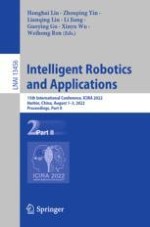2022 | OriginalPaper | Buchkapitel
Generative Adversarial Network Based Human Movement Distribution Learning for Cable-Driven Rehabilitation Robot
verfasst von : Zonggui Li, Chenglin Xie, Rong Song
Erschienen in: Intelligent Robotics and Applications
Aktivieren Sie unsere intelligente Suche, um passende Fachinhalte oder Patente zu finden.
Wählen Sie Textabschnitte aus um mit Künstlicher Intelligenz passenden Patente zu finden. powered by
Markieren Sie Textabschnitte, um KI-gestützt weitere passende Inhalte zu finden. powered by
